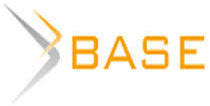What predicts adult immigrants’ engagement in host language training, social class, forms of capital, or academic self-efficacy?
Introduction. Host language training for immigrants continues to be a debated issue. Beyond language skills, immigrants’ engagement in language training has seldom been studied. Purpose: The present study predicted student engagement in Swedish language training programmes. Predictors of engagement include (a) socioeconomic and sociodemographic factors (sex, socioeconomic groupings); (b) human capital; (c) social capital; and (d) academic self-efficacy. Methodology and methods: The data consist of a survey with 186 participants from one language training centre (i.e., non-random). Results: The participants reported a high level of engagement in language training. The study used linear regression and structural equation modelling. First, the study indicates (unexpectedly) that students with low education were more engaged than highly educated students. Second, students with greater social capital had greater engagement. Third, academic self-efficacy made the largest positive difference in student engagement. Conclusions: The study concludes with support for theories in immigration research and adult education, with the exception of the unexpected finding.

















Пока никто не оставил комментариев к этой публикации.
Вы можете быть первым.
Adamuti-Trache, M. (2013), Language ac-quisition among adult immigrants in Canada: The effect of premigration language capital. Adult Edu-cation Quarterly, 63(2), 103-126. DOI: 10.1177/0741713612442804.
Adamuti-Trache, M. and Sweet, R. (2010), Adult immigrants’ participation in Canadian edu-cation and training. Canadian Journal for the Study of Adult Education, 22(2), 1-26.
Adamuti-Trache, M., Anisef, P. and Sweet, R. (2018), Differences in language proficiency and learning strategies among immigrant women to Canada. Journal of Language, Identity & Education, 17(1), 16-33. DOI: 10.1080/15348458.2017.1390433.
Bandura, A. (1986), Social foundations of thought and action. Prentice-Hall.
Boeren, E., Nicaise, I. and Baert, H. (2010), Theoretical models of participation in adult educa-tion: The need for an integrated model. Interna-tional Journal of Lifelong Education, 29(1), 45-61. DOI: 10.1080/02601370903471270.
Cebolla-Boado, H. and Soysal, Y.N. (2018), Educational optimism in China: Migrant selectivi-ty or migration experience? Journal of Ethnic and Migration Studies, 44(13), 2107-2126. DOI: 10.1080/1369183X.2017.1417825.
Chiswick, B.R. and Miller, P.W. (2015), In-ternational migration and the economics of lan-guage. In Handbook of the economics of interna-tional migration, 1, 211-269. North-Holland.
Chui, T.W. (2011), Immigrant women. Sta-tistics Canada.
Connell, J.P. and Wellborn, J.G. (1991), Competence, autonomy, and relatedness: A moti-vational analysis of self-system processes. In M. R. Gunnar & L. A. Sroufe (Eds.), The Minnesota sym-posia on child psychology, 23. 43-77. Lawrence Erlbaum Associates, Inc.
Council of Europe (2001), Common Europe-an framework of reference for languages: Learning, teaching, assessment. Cambridge University Press.
Cummins, J. (1981), Age on arrival and im-migrant second language learning in Canada: A reassessment. Applied Linguistics, 2(2), 132-149.
Epskamp, S. (2015), semPlot: Unified visual-izations of structural equation models. Structural Equation Modeling: A Multidisciplinary Journal, 22(3), 474-483. DOI:10.1080/10705511.2014.937847.
Fredericks, J.A., Blumenfeld, P.C. and Paris, A.H. (2004), School enthusiasm: Potential of the concept, state of the evidence. Review of Educa-tional Research, 74(1), 59-109.
Giddens, A. (1984), The constitution of socie-ty: Outline of the theory of structuration. University of California Press.
Goldin, C. (2016), Human capital. In C. Diebolt & M. Haupert (Eds.), Handbook of Clio-metrics, 55-86). Springer Verlag.
Isphording, I. (2015), “What drives the lan-guage proficiency of immigrants?” IZA World of Labor, 177, 1-10.
Manninen, J., and Meriläinen, M. (2011), Benefits of lifelong learning. BeLL Survey Results Retrieved from http://www.bell-project.eu/cms/wp-content/uploads/2014/06/BeLL-Survey-results.pdf.
Martin, A.J. and Dowson, M. (2009), Inter-personal relationships, motivation, engagement and achievement: Yields for theory, current issues and educational practice. Review of Educational Research, 79 (1), 327-365. https://doi.org/10.3102/0034654308325583.
Martinovic, B., Van Tubergen, F. and Maas, I. (2009), Changes in immigrants’ social integra-tion during the stay in the host country: The case of non-Western immigrants in the Netherlands. Social Science Research, 38(4), 870-882. https://doi.org/10.1016/j.ssresearch.2009.06.001.
McQuaid, R., Raeside, R., Canduela, J., Egdell, V., Lindsay, C. and Berry, C. (2012), En-gaging low skilled employees in workplace learning. UK Commission for Employment and Skills (UKCES), Evidence Report 43.
Naidoo, L. (2009), Developing social inclu-sion through after‐school homework tutoring: A study of African refugee students in Greater West-ern Sydney. British Journal of Sociology of Educa-tion, 30(3), 261-273. DOI: 10.1080/01425690902812547.
Nilsson, A. and Nyström, Ö. (2016), Flyktingkrisen och den svenska modellen [The Ref-ugee crises and the Swedish Welfare Model]. Ce-landers förlag.
Paradis, J., Soto-Corominas, A., Chen, X. and Gottardo, A. (2020), How language environ-ment, age, and cognitive capacity support the bi-lingual development of Syrian refugee children recently arrived in Canada. Applied Psycholinguis-tics, 1-27. doi.org/10.1017/S014271642000017X.
R Core Team (2018), R: A language and en-vironment for statistical computing.
R Foundation for Statistical Computing.
Revelle, W. (2018), Psych: Procedures for personality and psychological research. Northwest-ern University.
Rose, D. and Harrison, E. (2007), The Euro-pean socio-economic classification: A new social class schema for comparative European research. European Societies, 9(3), 459-490. https://doi.org/10.1080/14616690701336518.
Rosseel, Y. (2012), Lavaan: An R package for structural equation modeling and more. Version 0.5-12 (BETA). Journal of Statistical Software, 48(2), 1-36.
Sandwall, K. (2013), Att hantera praktiken: om sfi-studerandes möjligheter till interaktion och lärande på praktikplatser [Doctoral dissertation, Göteborgs Universitet]. Database.
Wedin, Å. and Norlund Shaswar, A. (2019), Whole class interaction in the adult L2-classroom: The case of Swedish for immigrants. Apples: Jour-nal of Applied Language Studies, 13(2), 17-34.
Wehlage, G.G., Rutter, R.A., Smith, G.A., Lesko, N.L. and Fernandez, R.R. (1989), Reducing the risk: Schools as communities of support. Farmer Press.
West, S. G., Taylor, A. B. and Wu, W. (2012), Model fit and model selection in structural equation modeling. Handbook of Structural Equa-tion Modeling, 1, 209-231.
Wrigley, H. (2013), New to literacy: Chal-lenges facing immigrants with minimal prior schooling. Perspectives on Language and Literacy, 39(2), 31–35.
Öbrink Hobzová, M. (2021), Development and current challenges of language courses for immigrants in Sweden. Journal of Adult and Con-tinuing Education, 27(1), 84-99.